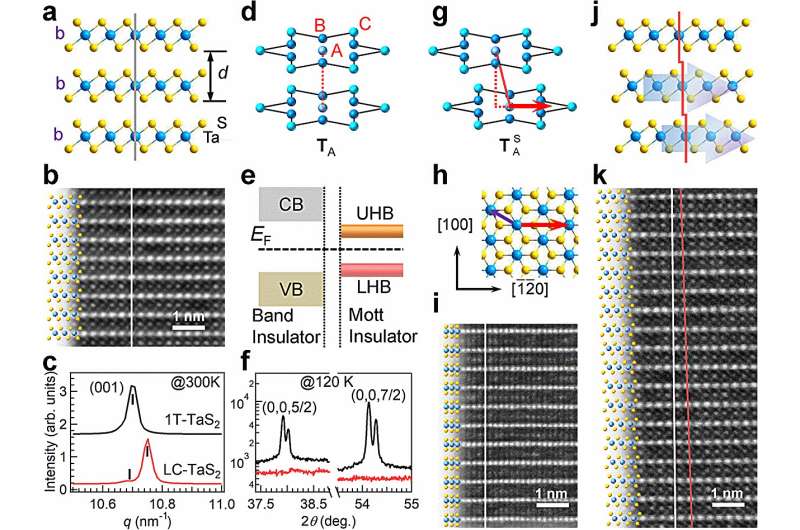This article has been reviewed according to Science X's editorial process and policies. Editors have highlighted the following attributes while ensuring the content's credibility:
fact-checked
peer-reviewed publication
trusted source
proofread
Researchers present new method to fine-tune properties of layered transition metal dichalcogenide crystals

A research group led by Prof. Cao Liang from the Hefei Institutes of Physical Science of the Chinese Academy of Sciences, together with collaborators, has introduced an additional translational degree of freedom in layered transition metal dichalcogenide crystals, enabling fine-tuning of their physical properties.
The results were published in Nature Communications.
Layered Mott insulators help us understand how different states such as Mott insulators, charge density waves, and superconductors are connected. By changing how these layers stack and behave under pressure and temperature, scientists can explore these relationships.
One material, 1T-TaS2, is particularly interesting because it changes in complex ways as it cools, exhibiting unusual insulating behavior at low temperatures and high electron densities. However, even after much research, it's still unclear whether this insulating state is a Mott insulator or a band insulator.
In this study, the researchers introduced a novel approach to manipulate the inter-layer coupling strength in layered crystals by deliberately introducing fractional misalignment of adjacent layers. This controlled inter-layer stacking and coupling revealed the dualistic insulating nature of 1T-TaS2 crystals, showing a shift between 3D band-insulating states and 2D Mott-insulating states.
This discovery has important implications for understanding the origin of hidden states under non-equilibrium conditions and the anomalies in 1T-TaS2, such as the absence of long-range magnetic order and the unexpected appearance of superconducting states.
For the first time, they demonstrated how the fractional lattice translation between adjacent layers in layered crystals can profoundly modify electronic structures. This discovery introduces an additional translational degree of freedom that allows fine-tuning of the properties of bulk crystals.
Unlike traditional methods such as chemical doping, intercalation and pressure, this approach is remarkably simple and clean, avoiding the introduction of impurities while preserving the mechanical strength and stability of the crystals.
"The extension of the laddering configuration we define to other layered crystals with similar structural properties of intra-layer stiffness and inter-layer slipperiness presents exciting opportunities to study correlated states confined to 2D systems, similar to the reduction of dimensionality in layered 3D materials," said Prof. Cao Liang.
More information: Yihao Wang et al, Dualistic insulator states in 1T-TaS2 crystals, Nature Communications (2024). DOI: 10.1038/s41467-024-47728-0
Journal information: Nature Communications
Provided by Chinese Academy of Sciences




















